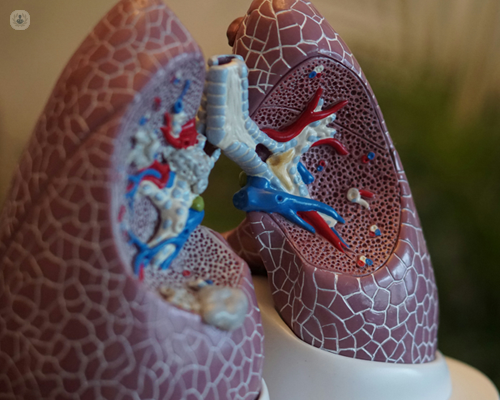From diagnosis to daily life: A comprehensive look at COPD
Autore:Chronic obstructive pulmonary disease (COPD) is a progressive lung condition. It causes breathing to become increasingly difficult. It encompasses diseases such as chronic bronchitis and emphysema, affecting millions worldwide. Managing COPD effectively requires a comprehensive approach, from early diagnosis to ongoing care.

What causes COPD?
Primarily, COPD is caused by long-term exposure to irritants that can cause lung damage. They include:
- Smoking: This is the top cause of COPD. It is responsible for the majority of cases.
- Air pollution: Prolonged exposure to environments full of pollution can contribute.
- Occupational hazards: Inhaling dust, fumes or chemicals over time promotes risk.
- Genetics: Alpha-1 antitrypsin deficiency, which is a rare condition, can predispose individuals to COPD.
What are the symptoms of COPD?
Often, symptoms of COPD develop gradually. They can include:
- Persistent cough, often producing mucus.
- Shortness of breath, especially during physical activity.
- Wheezing or chest tightness.
- Frequent respiratory infections.
- Fatigue or low energy levels.
How is COPD diagnosed?
Early and accurate diagnosis is essential. Typically, the diagnostic process involves:
- Medical history and lifestyle assessment: Includes smoking history and exposure to environmental irritants.
- Spirometry test: Measures lung function to confirm airflow obstruction.
- Imaging tests: Chest X-rays or CT scans can detect lung damage.
- Blood tests: Identify oxygen levels and rule out other conditions.
What are treatment options for COPD?
While COPD cannot be cured, various treatments can improve quality of life and slow disease progression:
- Medications:
- Bronchodilators to relax airway muscles.
- Inhaled corticosteroids to reduce inflammation.
- Oxygen therapy: For those with low blood oxygen levels.
- Pulmonary rehabilitation: A programme combining exercise, education and support.
- Lifestyle changes: It’s incredibly important to stop smoking and maintain a healthy diet.
- Surgery: In severe cases, procedures like lung volume reduction surgery or lung transplants may be considered.
Tips for managing daily life with COPD
Living with COPD can be challenging, but the following strategies can help:
- Monitor symptoms: Track breathing, energy levels and triggers to manage flare-ups early.
- Stay active: Low-impact exercises like walking or yoga can improve lung function and overall health.
- Avoid triggers: Minimise exposure to smoke, dust and extreme temperatures.
- Get vaccinated: Regular flu and pneumonia vaccines can prevent respiratory infections.
- Seek support: Joining a COPD support group can provide emotional and practical advice.
The importance of early intervention
COPD often goes undiagnosed until it reaches an advanced stage. Recognising early symptoms and seeking medical advice promptly can make a significant difference in managing the disease. With proper care and lifestyle adjustments, many individuals with COPD can continue to lead fulfilling lives.


